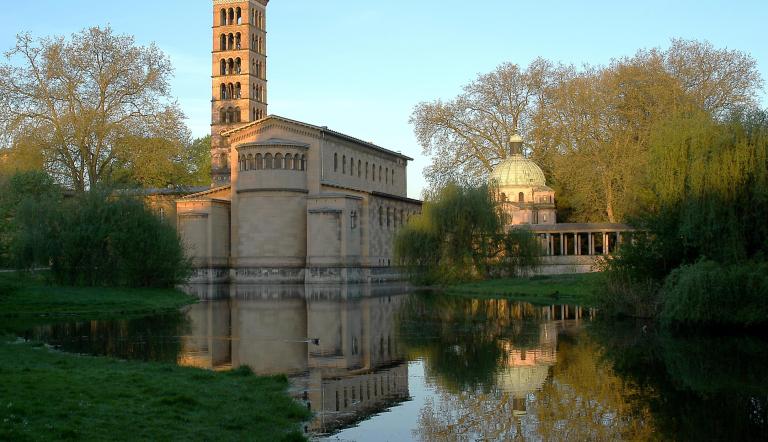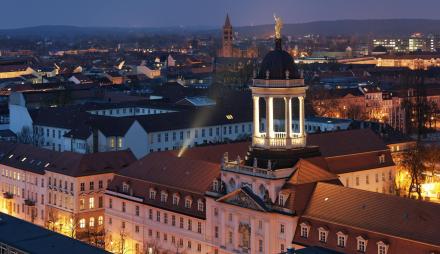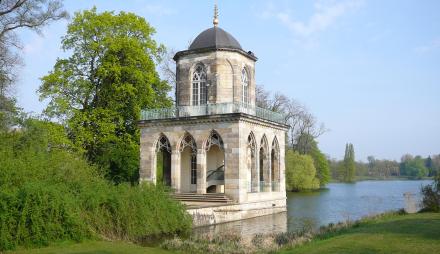At the entrance to the Sanssouci Park in Potsdam, in quiet seclusion, lies the ensemble of the Peace Church, designed to resemble an Italian monastery and grouped around a delicate bell tower. Frederick William IV had it built as a royal and parish church between 1845 and 1848, and he is buried there along with his wife. A man-made pond was created specifically for the church.
The interior of the Peace Church impresses with its original 13th-century Christian mosaic and the mausoleum where several kings are buried. The vaulted apse holds a mosaic that was relocated from Italy, dating from the early 13th century. The wooden coffered ceilings of the three-aisled basilica contribute to its excellent acoustics. As an important site for church music, the Peace Church received an organ by the Marburg master Gerald Woehl in 2004, which features 51 registers. The preserved historic organ case is crowned with a colorful rose window.
Every year, the International Organ Summer takes place in the Peace Church, as well as in the Erlöserkirche and the French Church, each time under a different theme. Here, the fantastic sounds of various performers can be experienced.
Since 2013, the Kammerakademie Potsdam and the Hans Otto Theater have used the Peace Church as a venue for the annual Potsdam Winter Opera. In the Peace Church, there is an opportunity to re-explore music-dramatic works with biblical themes, even in large casts, in an unconventional manner.
Links
Address
Friedenskirche Potsdam
Am Grünen Gitter 3
14469 Potsdam
Germany





